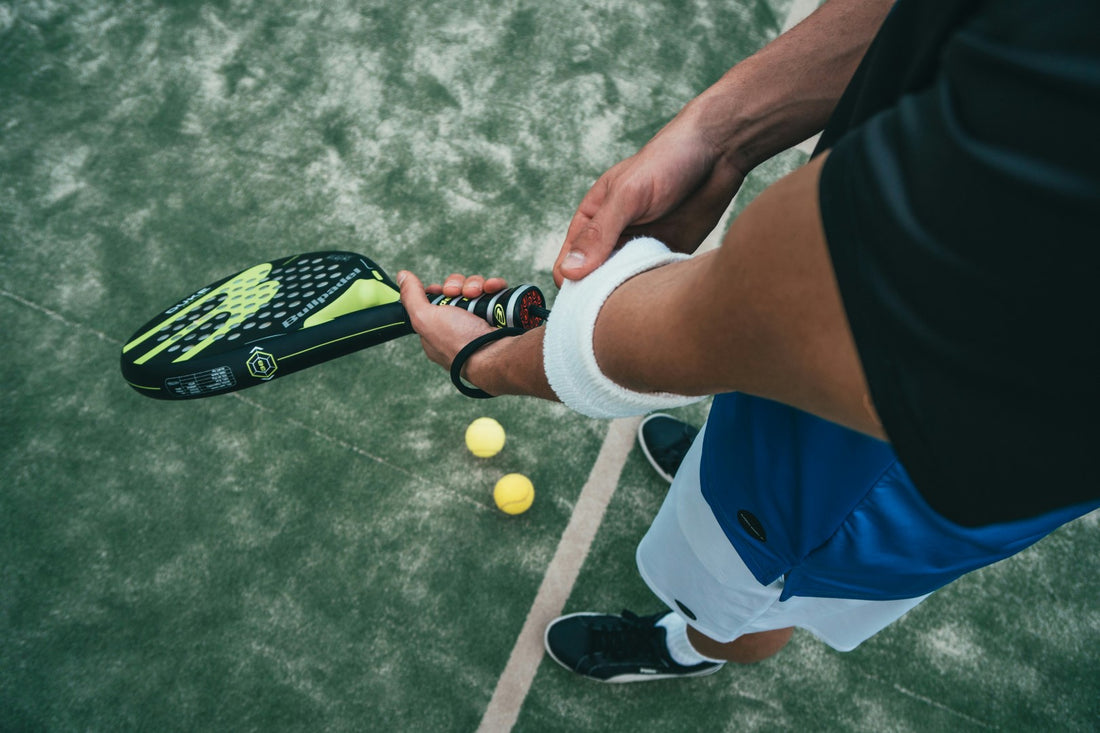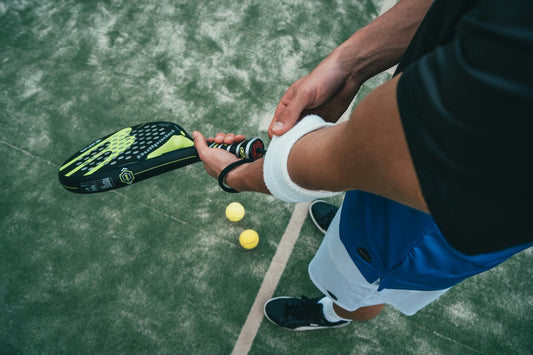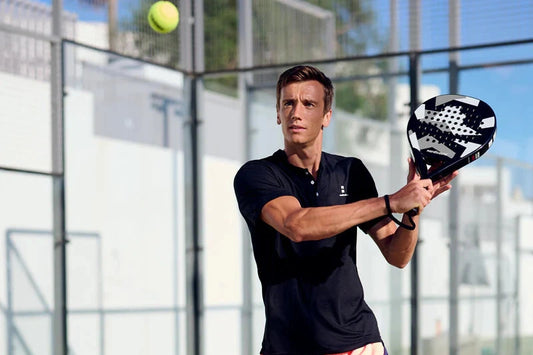
Why Padel is the Fastest Growing Racket Sport in the World
Share
Padel, a dynamic hybrid of tennis and squash, has skyrocketed in popularity, becoming one of the world’s fastest-growing racket sports. With millions of players across Europe, Latin America, and increasingly in the United States and Asia, it’s clear that padel is no fleeting trend. This blog will explore why padel has captured the hearts of sports enthusiasts and casual players alike, touching on its accessibility, social appeal, and rapid expansion across the globe.
1. Accessible for All Ages and Skill Levels
One of the strongest appeals of padel is its accessibility. The sport has a lower skill barrier than many other racket sports, making it enjoyable for beginners while still challenging for advanced players. Unlike tennis, padel courts are smaller and enclosed, meaning rallies last longer, and it’s easier for players to maintain rallies.
Players use solid, perforated paddles and a slightly less pressurized tennis ball, which slows down the game and makes it easier for new players to engage, stay active, and have fun. According to the International Padel Federation, the sport’s short learning curve has encouraged people across generations to try it out, with many quickly becoming passionate players.
2. Social and Community-Driven Sport
Padel is typically played in doubles format, making it highly social and interactive. Because of this, it’s an ideal sport for groups of friends, families, and colleagues. Unlike tennis, where solo play can be intense and competitive, padel’s format naturally fosters a cooperative, community-oriented environment.
Many clubs encourage regular social matches and organize local tournaments, creating a close-knit community around the sport. This social aspect of padel has fueled its rapid adoption across Europe, with Spain leading the way as the largest hub for the sport. Today, Spain alone boasts more than 20,000 padel courts and an estimated six million players.
3. Fast-Paced and Physically Engaging Gameplay
Despite its accessibility, padel remains fast-paced and physically engaging. Players use both the walls surrounding the court and precise shots to keep opponents on their toes. With the sport’s smaller court size, players are always close to the action, moving quickly and often strategizing alongside their partners.
The unique combination of fitness and fun is a major draw. In many ways, padel takes the best of tennis’s aerobic movement and squash’s rebound dynamics, making it appealing for those who want a physically engaging yet social workout.
4. Growing Professional Scene and Competitive Opportunities
As the sport grows, so does its professional scene. Padel now has a professional circuit, the World Padel Tour, which draws thousands of fans to events around the world. Top players from various countries compete in this prestigious circuit, boosting the sport’s visibility and helping drive interest at a grassroots level. The expansion of professional padel tournaments globally has contributed to its explosive growth by inspiring a new generation of players and bringing international media attention.
5. Expansion of Padel Infrastructure and Accessibility of Facilities
The number of padel facilities is expanding rapidly. Europe and Latin America have seen a boom in padel court installations, with private clubs, hotels, and leisure centres adding courts to meet demand. Even in countries where padel is newer, such as the United Kingdom and the United States, clubs are beginning to offer padel facilities, making it more accessible than ever.
This increased infrastructure and popularity have also led to a spike in investment from sports brands, which are now producing specialised equipment, including rackets, balls, and clothing designed for padel players.
6. Support from Influential Athletes and Celebrities
Padel’s rise has also been fuelled by endorsements from high-profile athletes and celebrities. Football players, including Lionel Messi and Zlatan Ibrahimović, are known to be fans, and some have invested in padel clubs. Their endorsement has given the sport significant visibility and has drawn fans from other sports to give padel a try.
7. Climate Adaptability and Year-Round Playability
Padel courts can be built outdoors or indoors, making it suitable for both warm and colder climates. In Spain, Argentina, and Sweden—key regions for padel—courts are available year-round, making the sport an option for any season. In Sweden, for instance, indoor facilities have allowed the sport to flourish even through winter, with the number of players doubling in recent years.
8. A Relaxed Alternative to Tennis
For many players, padel offers a more relaxed and forgiving version of tennis. Tennis is often intense, requires considerable skill, and can be physically demanding, particularly for beginners. Padel allows players to enjoy a similar experience with lower physical demands, thanks to its smaller court size and the less powerful racket and ball.
Conclusion: The Future of Padel
Padel’s accessibility, social aspect, rapid expansion, and growing professional scene have made it a global phenomenon. With thousands of new courts being built worldwide and a continually expanding community, padel is set to continue its upward trajectory as the world's fastest-growing racket sport. Whether you’re looking for a new way to stay active, a social outlet, or even a professional sport to follow, padel offers something for everyone.
1. Accessible for All Ages and Skill Levels
One of the strongest appeals of padel is its accessibility. The sport has a lower skill barrier than many other racket sports, making it enjoyable for beginners while still challenging for advanced players. Unlike tennis, padel courts are smaller and enclosed, meaning rallies last longer, and it’s easier for players to maintain rallies.
Players use solid, perforated paddles and a slightly less pressurized tennis ball, which slows down the game and makes it easier for new players to engage, stay active, and have fun. According to the International Padel Federation, the sport’s short learning curve has encouraged people across generations to try it out, with many quickly becoming passionate players.
2. Social and Community-Driven Sport
Padel is typically played in doubles format, making it highly social and interactive. Because of this, it’s an ideal sport for groups of friends, families, and colleagues. Unlike tennis, where solo play can be intense and competitive, padel’s format naturally fosters a cooperative, community-oriented environment.
Many clubs encourage regular social matches and organize local tournaments, creating a close-knit community around the sport. This social aspect of padel has fueled its rapid adoption across Europe, with Spain leading the way as the largest hub for the sport. Today, Spain alone boasts more than 20,000 padel courts and an estimated six million players.
3. Fast-Paced and Physically Engaging Gameplay
Despite its accessibility, padel remains fast-paced and physically engaging. Players use both the walls surrounding the court and precise shots to keep opponents on their toes. With the sport’s smaller court size, players are always close to the action, moving quickly and often strategizing alongside their partners.
The unique combination of fitness and fun is a major draw. In many ways, padel takes the best of tennis’s aerobic movement and squash’s rebound dynamics, making it appealing for those who want a physically engaging yet social workout.
4. Growing Professional Scene and Competitive Opportunities
As the sport grows, so does its professional scene. Padel now has a professional circuit, the World Padel Tour, which draws thousands of fans to events around the world. Top players from various countries compete in this prestigious circuit, boosting the sport’s visibility and helping drive interest at a grassroots level. The expansion of professional padel tournaments globally has contributed to its explosive growth by inspiring a new generation of players and bringing international media attention.
5. Expansion of Padel Infrastructure and Accessibility of Facilities
The number of padel facilities is expanding rapidly. Europe and Latin America have seen a boom in padel court installations, with private clubs, hotels, and leisure centres adding courts to meet demand. Even in countries where padel is newer, such as the United Kingdom and the United States, clubs are beginning to offer padel facilities, making it more accessible than ever.
This increased infrastructure and popularity have also led to a spike in investment from sports brands, which are now producing specialised equipment, including rackets, balls, and clothing designed for padel players.
6. Support from Influential Athletes and Celebrities
Padel’s rise has also been fuelled by endorsements from high-profile athletes and celebrities. Football players, including Lionel Messi and Zlatan Ibrahimović, are known to be fans, and some have invested in padel clubs. Their endorsement has given the sport significant visibility and has drawn fans from other sports to give padel a try.
7. Climate Adaptability and Year-Round Playability
Padel courts can be built outdoors or indoors, making it suitable for both warm and colder climates. In Spain, Argentina, and Sweden—key regions for padel—courts are available year-round, making the sport an option for any season. In Sweden, for instance, indoor facilities have allowed the sport to flourish even through winter, with the number of players doubling in recent years.
8. A Relaxed Alternative to Tennis
For many players, padel offers a more relaxed and forgiving version of tennis. Tennis is often intense, requires considerable skill, and can be physically demanding, particularly for beginners. Padel allows players to enjoy a similar experience with lower physical demands, thanks to its smaller court size and the less powerful racket and ball.
Conclusion: The Future of Padel
Padel’s accessibility, social aspect, rapid expansion, and growing professional scene have made it a global phenomenon. With thousands of new courts being built worldwide and a continually expanding community, padel is set to continue its upward trajectory as the world's fastest-growing racket sport. Whether you’re looking for a new way to stay active, a social outlet, or even a professional sport to follow, padel offers something for everyone.




